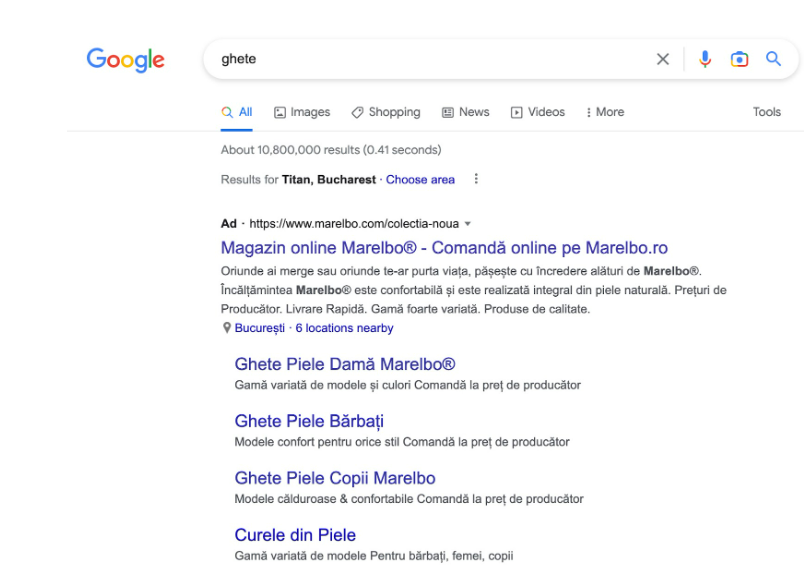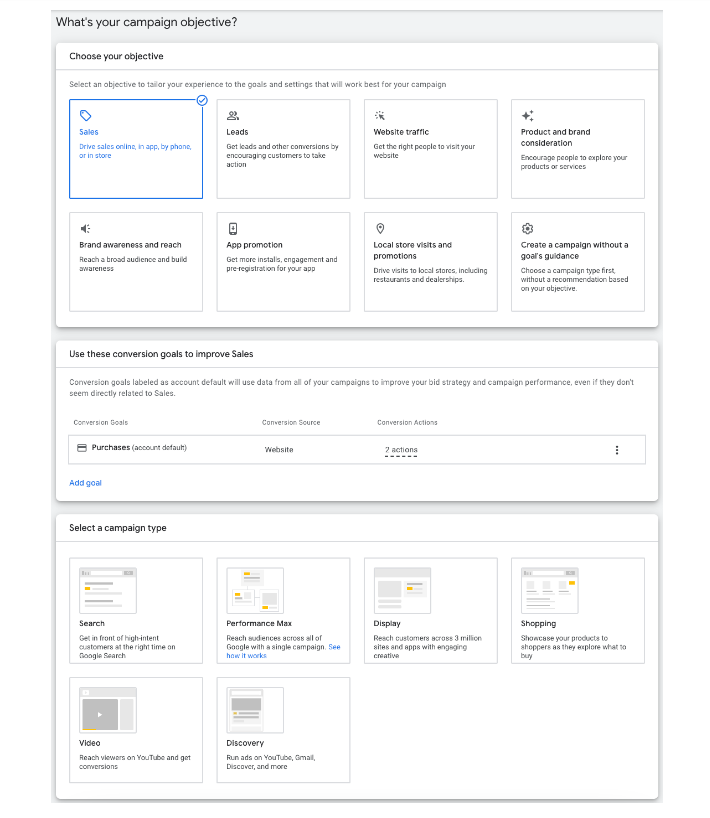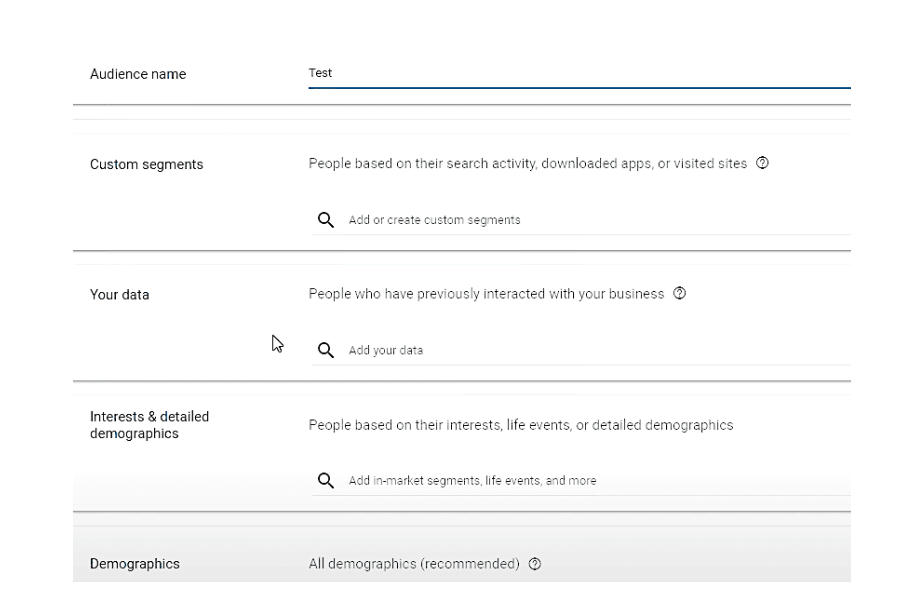Performance Max: Everything You Need to Know

Update: In March 2023, we received the Best Performance Max Campaign for Retail award, at the Search Excellence Awards 2022. Performance Max campaigns are the future of Google Ads. This award confirms that we are doing an excellent job with them in the retail segment. Keep reading to learn everything you need to know about Performance Max and how this new campaign model works.
Article overview
The newest type of campaign in Google Ads, Performance Max, changes everything. If over the last two years, the features and functionality of Google Ads have created confusion and the impression that Google was trying to automate strategy and monetize traffic, it seems that everything happened for a reason: the gradual introduction of the newest type of campaign, Performance Max.
Instead of focusing on keywords, like all other Google Ads campaigns until now - Google Performance Max focuses on an audience-centered strategy. Although it moves towards an advertising model similar to Facebook's, the Google ecosystem and advertising mechanism are much more robust. Facebook remains a website, a platform, while Google represents the entire internet.
Google Ads - Before and After Performance Max
The Google ecosystem is extensive, stretching across all corners of the digital world. Google's numerous networks include:
- YouTube
- Gmail
- Applications (e.g. Google Calendar)
- Google Maps
- Android
- Google Display Network
- Google Analytics
Furthermore, Google is currently the closest available system of artificial intelligence to the public. It is a computer system that thinks, and we are conditioned to turn to Google for any question we have. As a result, Google gathers a lot of information about us from our searches on the search engine, and so does each platform within its ecosystem.
Google Ads - Before Performance Max
Most people who are not involved in marketing would recognize Google ads as the results at the top of a Google search page, marked with Ad (Advertisement).

Well, this is just one way to advertise through Google Ads, called Google Search Ads. But for each platform mentioned above owned by Google, there is a way to advertise. Prior to the launch of Performance Max campaigns, the different types of campaigns included: Search, Shopping, Display, YouTube, Apps, Smart Shopping, Discovery and Local. Now, each of these campaigns has a purpose.
Google Ads after Performance Max
Performance Max is the newest type of campaign in Google Ads, and the most interesting part is that Performance Max ads can take the form of any of the campaign types listed above (video, search, display, etc.). It is an objective-based campaign, audience-oriented, and not focused on keywords or networks.
With Performance Max, Google uses your audience as a suggestion or starting point. Then, using this information, it searches for other audiences that are most likely to help you achieve your goal. For example, if you launch a new campaign targeting two specific audience categories, after running for a period of time, Google reports that these audiences have completed both conversion actions you wanted, but it has also found ten other audience categories that could do the same.
Performance Max: New Priorities, New Structure
Performance Max campaigns are built on the basis of three pillars or priorities, which are very different from how old campaigns were configured. The three pillars of Performance Max campaigns include:
- Objectives
- Assets
- Audiences
Objectives
For the first time, a Google campaign is oriented towards an objective. In the past, even though we were able to optimize for conversion actions, we could never make the objective the primary focus. However, with Performance Max, this changes. You can provide an objective, and then provide Google with the audiences you believe will fulfill that objective (called audience signals), and allow it to expand its search for the completion of the objective. This means that defining exact conversion actions is very important:

Assets
With Performance Max, you don't have to create ads yourself. Instead, you upload a series of creatives, called asset groups.
Asset groups

This new feature essentially represents how Performance Max campaigns are organized. Asset groups contain all the creative materials needed to create any type of ad across the Google network (search, display, video, discovery, Gmail), including photos, logos, videos, headlines, descriptions. Assets should be customized based on the targeted audience. In other words, each type of audience receives its own asset group. Google understands the journey your audience needs to take to make a conversion, and asset groups allow Google to personalize ads based on the audiences most likely to convert.
Audiences
Google's audience segmentation was fairly limited, but with Performance Max, Google has taken a step forward and offered us many more audience classification and segmentation tools, introducing audience signals.
Audience signals
Audience signals represent how asset groups are labeled or classified based on the targeted audience - that is, who you think should see the ads based on assets.

Audience signals do two things:
- Organize asset groups based on audience type
With Performance Max, asset groups are organized based on audience signals. - Provide Google with a starting point for the learning process
Manual research is still extremely important, and there are several ways to create and classify audience signals, such as custom segments, customer data, interests and detailed demographic data, general demographic data, etc.
Prerequisites for Performance Max
A solid business structure and a high-quality website have always been important for the success of Google Ads. But with Performance Max, the importance of these factors is critical. Performance Max scans the website's content to target the best possible audience across the entire Google ecosystem, and weak content means weak results. Additionally, even if you have a well-designed, well-functioning website, it would be beneficial for your business model to be prepared to handle the influx of traffic.
Must-haves for business planning
Here's what all businesses, without exception, need before launching a Performance Max campaign:
- Reasonable monthly expenses;
- Realistic time expectations
- Quality website (excellent content and solid SEO)
- Unique selling proposition (USP)
- Defined customer avatars and assets
Website Optimization
Once all the essential business planning points are met, you need to make sure that your website is optimized.With Performance Max, an optimized website is more important than ever.
In terms of website optimization, you can focus on:
- On-Site Optimization (Light)
- CRO (Conversion Rate Optimization)
- Website Speed Optimization
- Quality Assurance (QA)
In addition to optimizing your website, it's important to focus on preparing your service or product pages. Many businesses invest time, financial resources, and energy in optimizing the homepage, but neglect the pages that customers actually land on. Make sure that your product pages are properly structured.
Product page checklist
- Product name (make sure the product or service name is clear, descriptive, and intuitive enough for Google to identify the product and send relevant traffic)
- Product descriptions (descriptions complement the title)
- Media - photos and videos (custom images will always be better than bulk photos)
- Site navigation (ensure navigation is clear, easy, and accessible for users)
- Reviews (people buy from businesses they trust, so it's recommended to incorporate reviews on your site)
Performance Max for eCommerce
Currently, Performance Max is the most powerful eCommerce tool in the history of digital marketing. Starting in July 2022, Performance Max replaced Smart Shopping. With the advantage of Google's entire inventory, Performance Max gives us more control than Smart Shopping (the best campaign that could be used for eCommerce before Performance Max).
Best Practices for Performance Max
For Performance Max, there are no strict rules to follow, but there are some best practices that are important to know:
- For eCommerce: Run remarketing campaigns;
- Allow Google to use data from other campaigns to feed Performance Max;
- Performance Max works best alongside other campaigns;
- Bid on your brand;
- Focus on creatives;
- If Google says "optional," it probably isn't;
- Upload lists to Performance Max;
- Do not use Google Analytics conversions;
- Adhere to asset requirements;
- Pay attention to the recommended time frame for campaigns by Google.
The complete Performance Max Guide
The complete Performance Max guide will provide you with all the information you need to know about the newest type of campaign - Performance Max, from its structure to recommendations for improving conversion rates. Moreover, you will learn how to configure a Performance Max campaign for lead generation, conversion actions, budget, and bidding.
Fill out the form here and you will receive the complete Performance Max guide via email.





